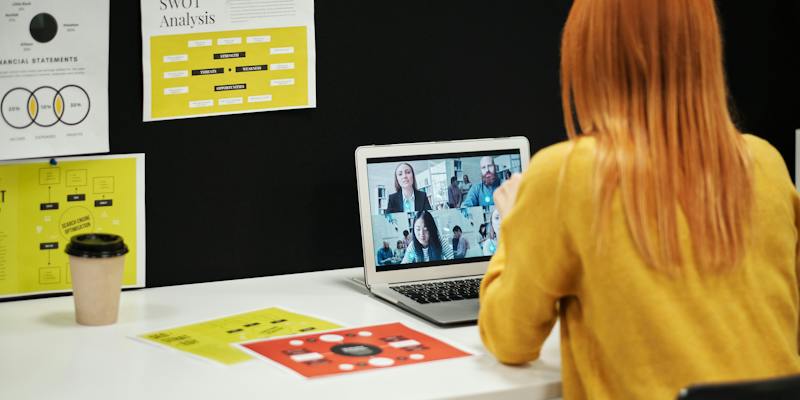The rise of hybrid meetings has transformed the way organizations collaborate, especially as remote work becomes increasingly prevalent. With attendees scattered across different locations, ensuring active engagement and participation from remote participants is of paramount importance. This article delves into the intricacies of hybrid meetings, exploring innovative solutions, designing for inclusion, promoting engagement, and ultimately transitioning to a remote-first mindset.
Simplifying Hybrid Meeting Technology
In order to streamline hybrid meetings, innovative solutions are emerging. These solutions encompass seamless integration of in-person and virtual components, enhanced audio and video capabilities, and user-friendly platforms that facilitate collaboration for all participants.
Organizations must invest in user-friendly technology that simplifies the process of joining and actively participating in hybrid meetings. This includes providing comprehensive training for both in-person and remote attendees to ensure smooth integration and equal opportunities for engagement.
Designing for Inclusion
Designing for inclusion requires a holistic evaluation of meeting practices that unintentionally hinder remote participants. This involves addressing issues such as limited visibility, difficulty in hearing, and exclusion from informal conversations.
By adopting a holistic approach, organizations can create an inclusive environment for both in-person and remote participants. Strategies may include using a moderator to balance participation, providing real-time transcription services, and fostering opportunities for social interaction.
Anticipating Needs and Promoting Engagement
Organizations must anticipate the unique challenges faced by remote participants and design meetings accordingly. This involves assessing factors such as time zones, internet connectivity, and accessibility to ensure equal opportunities for engagement.
To foster engagement and equality, meeting organizers should create interactive formats, facilitate virtual breakout sessions, and leverage digital tools that enable remote participants to actively contribute, share ideas, and collaborate effectively.
Beyond Accommodating Remote Employees
Accommodating remote employees is just the first step towards maximizing the potential of hybrid work. Organizations must shift from a reactive mindset to a proactive one, embracing the benefits and possibilities offered by hybrid collaboration.
Enabling seamless collaboration in hybrid meetings requires organizations to implement solutions that bridge the physical and digital divide. This involves creating hybrid teamwork structures, integrating asynchronous communication tools, and fostering a culture of trust and inclusivity.
Remote-First Mindset for Meeting Workflow
A remote-first mindset entails evaluating all aspects of the meeting workflow from the perspective of remote workers. This includes considering their access to information, opportunities for participation, and the overall remote experience.
Organizations must prioritize optimizing the remote worker experience to unlock their full potential. This requires investing in technology, offering remote-specific perks, and providing ongoing support to enhance remote employees’ engagement, well-being, and productivity.
Competitive Advantage through Seamless Collaboration
Companies that empower hybrid teams to collaborate seamlessly gain a competitive advantage in today’s dynamic business landscape. By fostering effective communication, encouraging cross-functional collaboration, and leveraging diverse perspectives, organizations can drive innovation and achieve better results.
Optimizing the remote worker experience becomes a critical issue for attracting top talent, improving productivity, and driving innovation. By offering a hybrid work model that prioritizes collaboration and engagement, organizations become desirable employers for a broader talent pool and can harness the power of diverse perspectives to fuel creativity and innovation.
Transitioning to a Remote-First Mindset
Transitioning to a remote-first mindset requires buy-in from key stakeholders, including leadership and team managers. This involves educating them about the value of hybrid meetings, dispelling concerns, and implementing robust change management strategies.
To facilitate a successful transition, organizations should provide comprehensive training to both in-person and remote employees. Additionally, establishing metrics and feedback mechanisms allows organizations to measure the effectiveness of the transition and make necessary adjustments.
As the hybrid work model gains traction, organizations must embrace the challenges and opportunities it presents. By prioritizing active engagement, intentionally designing for inclusion, and optimizing the remote worker experience, organizations can create an environment where hybrid meetings flourish. Transitioning to a remote-first mindset requires commitment, but the benefits of increased collaboration, productivity, and innovation make it a worthwhile endeavor in today’s interconnected world. By empowering hybrid teams to collaborate seamlessly, organizations gain a competitive advantage, attract top talent, and propel themselves towards future success.

